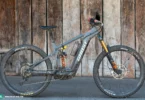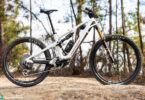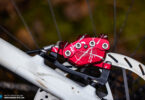Cube Testlab: At the Cube Testlab

E-Mountain bikes are high-tech products and their growing popularity has led to a rush of new developments. Advances in motor technology are as spectacular as the redefinition of the essential characteristics an (e-)mountain bike should have. However, to reach their full potential the geometry, stiffness and stability all need to be pushed to a new level. The more complex and lighter the products become, the greater the need for more exact, extensive, and harder testing. And not just by pro riders thrashing over the hardest trails in the world, but also under lab conditions. We got an exclusive look behind the scenes at the in-house lab of the German brand Cube, based in Waldershof.

When the inconspicuous double doors of the ground floor at Cube’s Waldershof HQ open, the visitor experiences a cold shiver and feels reminded of the inside of an hospital operating theater, one you’d rather not see from the inside. But, don’t be afraid – no humans are operated on in the sterile, white workplace of Bernd Schenkl and Willi Lützeler. The two engineers examine only bike frames and components, but with clinical detail.

Last year the testing lab moved into the new space and got one step closer to the fourteen-strong development team in the process. The test team is visited almost daily by their engineering colleagues to get results and insights from their dozen-plus testing stations. The results flow straight back into the development process.
Planning, testing, protocol – the test cycle of every frame is exactly defined by Bernd and Willi.
Different types of use mean different loads – clear really, but the standard DIN norms make no differentiation between the different types of mountain bike frame. So according to DIN norms, a downhill machine just needs to withstand the same demands as an XC hardtail.
This was reason enough for the two engineers and their colleagues to develop their own CTS
(Cube Testing Standard) which takes the different stresses of each sub-discipline into account. Bikes and components thus have to withstand way more than that what the DIN norm testing procedures require.
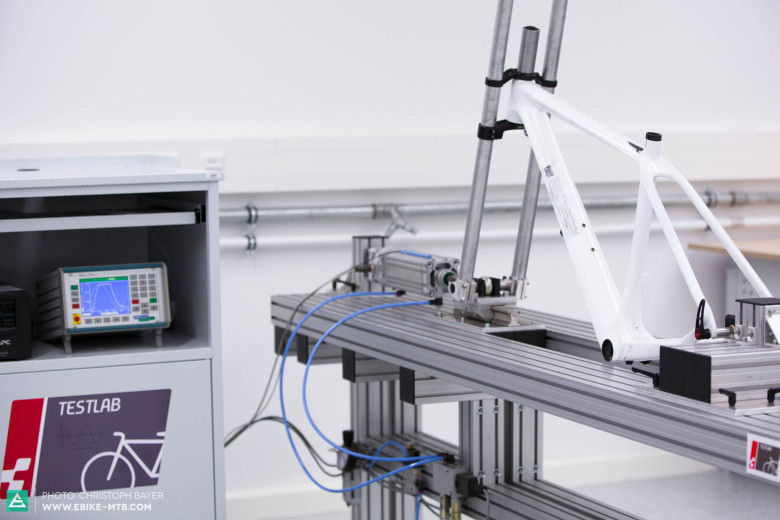
Every prototype frame completes a cycle made up of three different phases. Static tests determine rigidity (bottom bracket, head tube, etc.), while later pneumatic machines establish the longevity of frames by repeating stress cycles in many thousands of load repetitions.
DIN – Norm? Ridiculous! Frames only have it really tough when they’ve completed the in-house developed Cube Testing Standard.
In this way the machines can run continuously over several days and test bikes and components for long-term strength with realistic loads, thus simulating a lifetime of trail riding
The front impact test is both spectacular and enormously important. Frames are tested in multiple phases until they fail. Not only the overall force required, but also the type of failure are deciding factors. Dangerous splintering and the shearing of the entire head tube can be prevented in this way.

Only when prototypes have passed every test can full frame production begin, and even then regular checks of production frames are carried out.Only when prototypes have passed every test can full frame production begin, and even then regular checks of production frames are carried out.
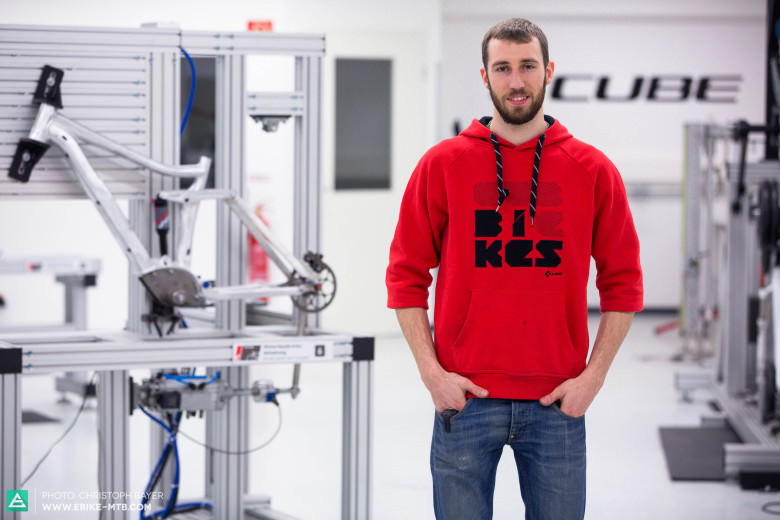
Every individual frame is checked for weight and rigidity in an additional testing stand prior to assembly. In the event of a crash the owner has the opportunity to have the frame re-checked, allowing any structural damage to be identified. This 100% control sets new standards in quality control, as well as offering consumers additional security. In total the visit to Waldershof gave us a glimpse into a well-conceived and complex testing procedure. Whilst the machines worked we were able to see products breaking and felt reassured about how much effort is made to improve our safety. Of course things can still go wrong, especially with high tech products, which must be both light and strong. But the higher the bar is raised in the testing lab, the more we can put our minds to rest on the trails.
The 100% control of every frame sets new standards in quality control as well as offering consumers additional security.
Text & Foto: Christoph Bayer
Did you enjoy this article? If so, we would be stoked if you decide to support us with a monthly contribution. By becoming a supporter of E-MOUNTAINBIKE, you will help secure a sustainable future for high-quality cycling journalism. Click here to learn more.





